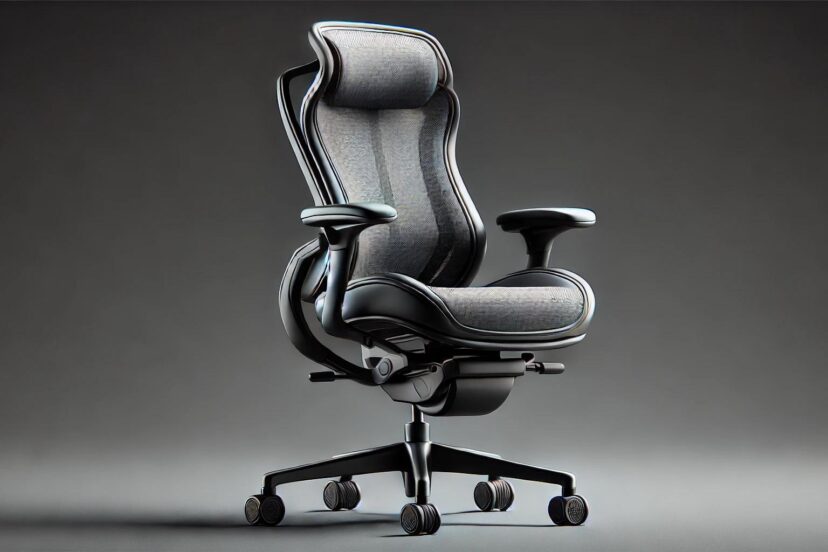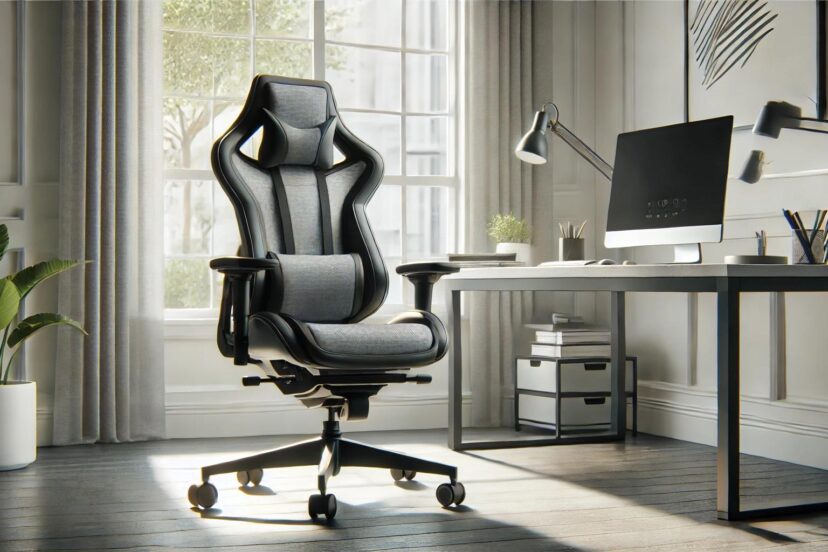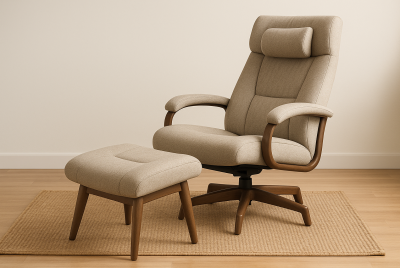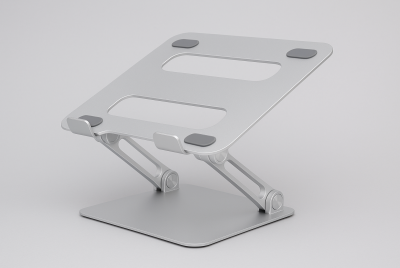Ergonomic Office Chair with Lumbar Support
We may earn a commission for purchases made using our links. Please see our disclosure to learn more.
Choosing a comfortable office chair that’s good on your back without making your wallet cry is crucial. There are tons of choices online which makes it harder for you to decide. But hey, if there’s one thing you should never compromise, it’s lumbar support. Believe me, if you’re anything like me who spends most of your day sitting at a desk trying to get things done… you’ll need a chair that offers good lumbar support. Let’s talk about how to make sure you get the right ergonomic office chair with lumbar support.
What is an Ergonomic Office Chair?
By this time, you probably have an idea of what an ergonomic office chair is. But if you’re still unsure, let me get things clear for you. An ergonomic office chair is a chair that’s designed to fit your body mimicking the natural curves of your spine while you sit. It also has adjustable features which the traditional wooden chair lacks. The best feature they offer is the lumbar support. Why? Because that will help you sit up straight, be comfortable, and avoid body pains (neck, shoulder, and back pains) after a long day at work.

Why Lumbar Support Matters
Have you ever stood up after sitting at your desk for 5 hours (or even more) straight? Your back felt like an old metal cracking screaming for help. Then you find yourself reaching for your lower back because of a dull pain. Sounds familiar isn’t it? Well, it’s time to listen to your body. Awkward sitting positions like slouching and hunching over can lead to this problem that’s why having an ergonomic office chair with lumbar support is a must. This chair will gently encourage you to sit properly while working.
Numerous studies highlight the importance of lumbar support in ergonomic office chairs. Research shows that it significantly reduces lower back pain, improves posture, and enhances comfort. A study on ergonomic interventions found that workers using lumbar support experienced less discomfort, while a review on ergonomic seating noted increased productivity due to improved posture. Furthermore, findings from a comprehensive review confirmed the positive effects on overall well-being and work performance.
The Benefits of Lumbar Support
Still not worth the fuss? I get it. Here are more reasons why using an ergonomic office chair will benefit you and your productivity:
– Prevents Lower Back Pain: Tired of feeling tired? This chair will keep your spine’s natural curve in check which means lesser body strain and discomfort.
– Improves Posture: Ergonomic office chairs will make you sit up straight even if you’re stubborn as a mule. No time for being lazy!
– Increases Comfort: No need to twist and turn just to find the “right” position. Since it offers lumbar support, you’ll feel comfy right away.
– Boosts Productivity: Nobody can focus when they’re not comfortable, right? Unlike ordinary stiff chairs, an ergonomic office chair with lumbar support can make you feel energized and help you get more things done.
– Reduces the Risk of Chronic Issues: If you ignore that pain you’re feeling right now, chances are, you’ll get herniated discs or sciatica in the future. Lumbar support helps prevent these long-term complications before they even start.
How to Adjust Your Ergonomic Office Chair for Optimal Lumbar Support
Now that you’ve got your fancy new chair, how do you make sure it’s doing its job? Here’s a quick guide to adjusting your chair to give your back the TLC it needs:
1. Sit All the Way Back: Make sure your back is fully supported by the chair, not just the edge.
2. Adjust the Lumbar Support: Most ergonomic chairs allow you to move the lumbar support up or down. Find the sweet spot where it fits snugly into the curve of your lower back.
3. Keep Your Feet Flat: Make sure your feet are resting flat on the floor. Your knees at a 90-degree angle too. If they dangle, try using a footrest.
4. Leave a Small Gap Behind Your Knees: Make sure there’s about a 1-2 inch gap between the back of your knees and the chair to keep circulation flowing.
5. Adjust the Armrests: To feel more comfortable, your arms should rest at a 90-degree angle (or just in a natural position). If the armrests are too high or too low, your shoulders will strain.
Key Features to Look for in an Ergonomic Chair with Lumbar Support
Listen up! Just because one chair has lumbar support doesn’t mean it’s the right fit for you. Here’s a checklist to make sure you’re getting what you need:
– Adjustable Lumbar Support: Look for chairs that allow you to tweak the height and depth of the lumbar support for a perfect fit.
– Tilt Mechanism: A slight tilt can ease the pressure on your spine and even engage your core muscles.
– Breathable Material: No one likes sitting in a sweaty chair. Opt for materials like mesh that promote airflow and keep you cool.
– Seat Depth Adjustment: This lets you find the right position, ensuring the chair isn’t cutting into the back of your legs.
– Armrest Adjustability: Being able to adjust the armrests up, down, or even sideways is key to long-term comfort.
Are All Chairs with Lumbar Support Created Equal?
Not exactly, folks. Okay, I know some chair brands boast “lumbar support”. I mean, that’s good but will it actually help you? Trust me, I’ve bought a few ergonomic chairs over the past few years and some of them don’t give what they promised. Not worth the coin. Sure, they offer lumbar support but it’s too stiff, too soft, or just plain uncomfortable. Look for the one that is actually comfortable and is worth every penny spent. Do your homework and search for customer reviews! That should help you decide faster.
Top Ergonomic Office Chairs with Lumbar Support
- Ikea Markus
- Features: Built-in lumbar support, mesh back for breathability, adjustable height and tilt.
- Why It’s Great: A simple, reliable chair that’s easy on your wallet but still provides decent back support.
- AmazonBasics High-Back Executive Chair
- Features: Adjustable lumbar support, padded seat, and a high backrest.
- Why It’s Great: A no-fuss, comfortable chair for anyone looking to upgrade their workspace on a budget.
- Branch Ergonomic Chair
- Features: Adjustable lumbar support, tilt mechanisms, breathable fabric, and a modern design.
- Why It’s Great: Highly customizable, this chair offers excellent lumbar support and adjustability at a mid-range price point.
- HON Ignition 2.0
- Features: Adjustable lumbar support, customizable recline, and height-adjustable arms.
- Why It’s Great: Offers a wide range of adjustability to ensure you can tailor the lumbar support to your needs.
- Herman Miller Aeron
- Features: Patented PostureFit SL for superior lumbar support, breathable mesh, adjustable everything (seat, arms, tilt).
- Why It’s Great: One of the top ergonomic chairs on the market, designed for long hours of seated work with maximum lumbar support.
Signs You Need a New Ergonomic Chair
What if you already got the chair but the pain just won’t go away? Sounds like an annoying ex lol, just kidding. If you ever noticed some of these red flags, it might be time for an upgrade:
– Worn-Out Padding: Does the cushion still feel like a cushion or not? If it feels rock-hard, it’s no longer giving you the support you need.
– Uncomfortable Lumbar Support: If it feels rigid, too low, or just plain awkward, it’s not helping.
– Limited Adjustability: If your chair doesn’t allow for customization—especially in the lumbar region—it might not be designed for long-term comfort.
– Constant Slouching: If you’re always fidgeting or adjusting your posture, it’s a sign your chair isn’t keeping your body properly aligned.
A Word About Posture
Even the best chair in the world won’t help if you continue to slouch or bend over like a lazy person. You’re still bound to feel those nagging pains. Remember:
– Keep Your Back Straight: Align your spine with the backrest.
– Relax Your Shoulders: Avoid hunching, which puts strain on your back and neck.
– Take Breaks: Stand up, stretch, and move every hour, no matter how ergonomic your chair is.
Check this out:
Conclusion
An ergonomic office chair with lumbar support can significantly improve your health and productivity. Even if there are lots of choices available out there, you can still find the right chair that perfectly suits your body and needs. Make sure to do your research and follow this guide on key features to look for so you can get the right chair for you. Remember, don’t be fooled by pure looks. Make sure you feel comfortable sitting on it.
FAQs
1. What is lumbar support in an office chair?
It’s one of the chair features that maintains the natural inward curve of the lower back while you’re seated.
2. Why is lumbar support important?
It helps prevent lower back pain and encourages one to maintain a good posture.
3. How do I adjust the lumbar support in my chair?
Sit all the way back in the chair and adjust the lumbar support until it feels comfortable.
4. Can a chair without lumbar support cause back pain?
Yes, it can. Without proper lumbar support, it’s easier to slouch or lean over which leads to lower back pain.
5. What should I look for in an ergonomic chair?
Look for features like lumbar support, tilt mechanism, breathable material (like mesh), seat depth adjustment, and armrest adjustability for optimal comfort.




